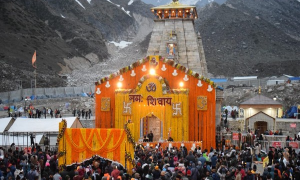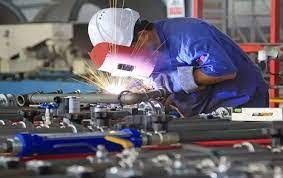President Vladimir Putin, on Thursday, announced a military operation against Ukraine, saying- ‘I have made the decision of a military operation,’ throwing the world on the tenterhooks.
Russia in its part, put out the reason for the aggression too, arguing the rebel leaders in Ukraine sought support against what has been said as aggression from the Ukrainian armed forces.
However, Ukraine President Volodymyr Zelenskyy, said he tried to reach out to his Russian counterpart with a request against any bloodshed, which went unheeded.
There is a growing confusion amidst the escalating tensions between Russia and Ukraine.
To understand the evolving situation, better let’s take a look at the timeline of the main events in Ukraine’s Political history since it won independence from Moscow in 1991.
– 1991: Leonid Kravchuk, leader of the Soviet republic of Ukraine, declares independence from Moscow. In a referendum and presidential election, Ukrainians approve independence and elect Kravchuk as president.
– 1994: Leonid Kuchma beats Kravchuk in a presidential election deemed largely free and fair by observers.
– 1999: Kuchma is re-elected in 1999 in a vote riddled with irregularities.
– 2004: Pro-Russian candidate Viktor Yanukovich is declared president but allegations of vote-rigging trigger protests in what becomes known as the Orange Revolution, forcing a re-run of the vote. A pro-Western former prime minister, Viktor Yushchenko, is elected president.
– 2005: Yushchenko takes power with promises to lead Ukraine out of the Kremlin’s orbit, towards NATO and the EU. He appoints former energy company boss Yulia Tymoshenko as prime minister but, after infighting in the pro-Western camp, she was sacked.
– 2008: NATO promises Ukraine a birth in the alliance.
– 2010: Yanukovich defeats Tymoshenko in a presidential election. Russia and Ukraine clinch a gas pricing deal in exchange for extending the lease for the Russian navy in a Ukrainian Black Seaport.
– 2013: Yanukovich’s government suspends trade and association talks with the EU in November and opts to revive economic ties with Moscow, triggering months of mass rallies in Kyiv.
– 2014: The protests, largely focused around Kyiv’s Maidan square, turn violent. Dozens of protesters are killed. In February, parliament votes to remove Yanukovich, who fled. Within days, armed men seize parliament in the Ukrainian region of Crimea and raise the Russian flag.
Moscow annexes the territory after a March 16 referendum which shows overwhelming support in Crimea for joining the Russian Federation.
– 2014, April- Pro-Russian separatists in the eastern region of Donbas declare independence. Fighting breaks out which continued sporadically, despite frequent ceasefires, into 2022.
– 2014, May- Businessman Petro Poroshenko wins a presidential election with a pro-Western agenda.
– 2014, July- A missile brings down passenger plane MH17 en route from Amsterdam to Kuala Lumpur, killing all 298 people on board. The weapon used is traced back by investigators to Russia, which denies involvement.
– 2017: An association agreement between Ukraine and the EU opens markets for free trade of goods and services, and visa-free travel to the EU for Ukrainians.
– 2019: A new Ukrainian Orthodox church won formal recognition, angering Kremlin. Former comic actor Volodymyr Zelenskiy defeats Poroshenko in an April presidential election on promises to tackle corruption and end the war in eastern Ukraine. His Servant of the People party wins a July parliamentary election.
– 2019 – US President Donald Trump asked Zelenskiy in July to investigate Joe Biden, his rival in the U.S. presidential race, and Biden’s son Hunter over possible business dealings in Ukraine. The call led to a failed attempt to impeach Trump.
– Jan. 2021 – Zelenskiy appeals to Biden, now U.S. president, to let Ukraine join NATO.
– Feb. 2021 – Zelenskiy’s government imposes sanctions on Viktor Medvedchuk, an opposition leader and the Kremlin’s most prominent ally in Ukraine.
– Oct. 2021 – Ukraine uses a Turkish Bayraktar TB2 drone for the first time in eastern Ukraine, angering Russia.
– Dec. 7 – Biden warns Russia of sweeping Western economic sanctions if it invades Ukraine.
– Dec 17 – Russia presents detailed security demands including a legally binding guarantee that NATO will give up any military activity in eastern Europe and Ukraine.
– Jan 10, 2022 – U.S. and Russian diplomats fail to narrow differences on Ukraine.
– Jan 14 – A cyber-attack warning Ukrainians to “be afraid and expect the worst hits Ukrainian government websites
– Jan 17 – Russian forces start arriving in Belarus, to the north of Ukraine, for joint drills.
– Jan 24 – NATO puts forces on standby and reinforces Eastern Europe with more ships and fighter jets.
– Jan 26 – Washington presents a written response to Russia’s security demands, repeating a commitment to NATO’s “open-door” policy while offering “pragmatic” discussions of Moscow’s concerns.
– Jan 28 – President Vladimir Putin says Russia’s main security demands have not been addressed.
– Feb 2 – The United States says it will send 3,000 extra troops to Poland and Romania to help shield NATO allies in Eastern Europe from any spillover from the crisis.
– Feb 4 – Putin, at Beijing Winter Olympics, wins Chinese support for his demand that Ukraine not be allowed to join NATO.
– Feb 7 – French President Emmanuel Macron sees some hope for a diplomatic resolution of the crisis after meeting Putin in the Kremlin. Macron then visits Kyiv and praises the “sang-froid” of Zelenskiy and the Ukrainian people.
– Feb 9 – Biden says “things could go crazy quickly” as the U.S. State Department advises Americans in Ukraine to leave immediately. Other countries also urge their nationals to leave.
– Feb 14 – Zelenskiy urges Ukrainians to fly flags and sing the national anthem in unison on Feb. 16, a date some Western media say Russia could invade.
– Feb 15 – Russia says some of its troops are returning to base after exercises near Ukraine and mocks Western warnings about a looming invasion. Russia’s parliament asks Putin to recognise as independent two Russian-backed breakaway regions in eastern Ukraine.
– Feb 18 – U.S. ambassador to the Organization for Security and Cooperation in Europe Michael Carpenter says Russia has probably massed between 169,000-190,000 personnel in and near Ukraine.
– Feb 19 – Russia’s strategic nuclear forces hold exercises overseen by Putin.
– Feb 21 – France’s Macron says Biden and Putin have agreed in principle to a summit over Ukraine. The Kremlin says Putin will sign a decree recognising two breakaway regions in eastern Ukraine as independent entities shortly.
– Feb 22- Putin recognises the independence of two separatist regions in eastern Ukraine. The EU vows sanctions. Putin orders Russian troops into separatist areas in eastern Ukraine on a “peacekeeping” mission.
– Feb 23- Ukraine declares a state of emergency, summons citizens home from Russia, US warns Ukraine of full-scale Russian invasion in 48 hours.
– Feb 24- Putin announces a military operation in Ukraine in a surprise television address, calling on Ukrainian soldiers to lay down their arms and claiming he wants a “demilitarisation” of the former Soviet state, not its occupation.
Amid growing tensions between Russia and Ukraine, in an emotional address and appeal to Russia, Ukrainian President Zelensky said that his country can’t be a threat to his neighbouring country Russia, saying we want peace, people want peace, but there was no answer, only silence from the Russian side.
Meanwhile, support for Ukraine has grown with even China, speaking for Ukraine’s sovereignty.
The USA along with the European Union has already imposed several sanctions against Russia, saying Russia and China are trying to create an intensely illiberal world order.
Many more sanctions are expected to be imposed in the days to come.


























 WhatsApp us
WhatsApp us
Pingback: pop over here
Pingback: youtube automation niches